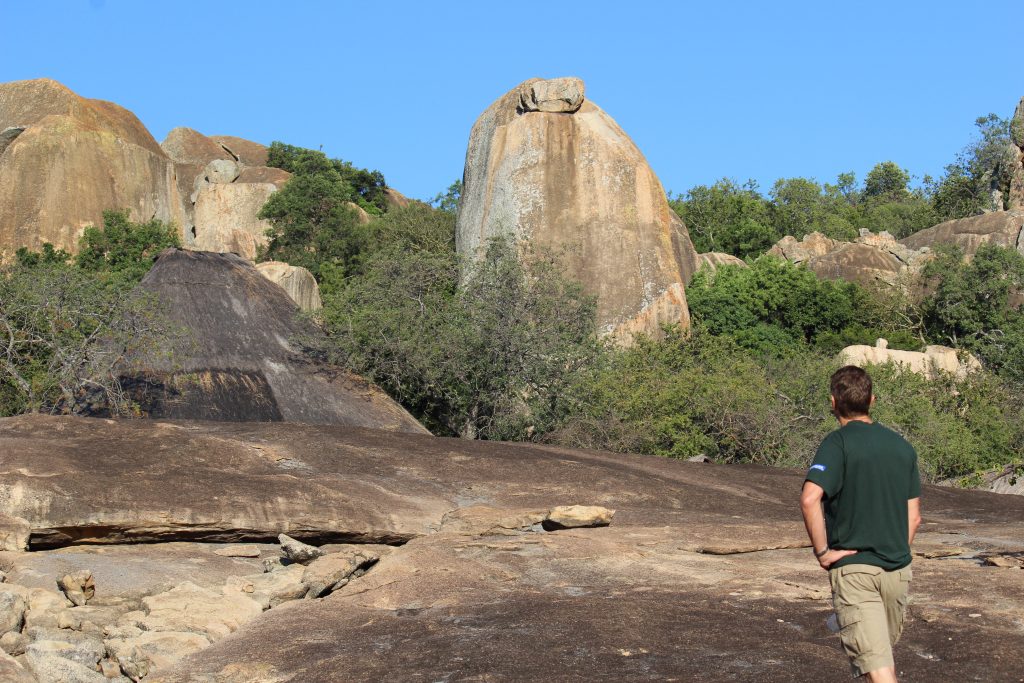A couple of Sundays ago I made a last minute decision to drive down to Bulawayo to see my younger brother. I had not realised that the ZITF (Trade Fair) was being held that week resulting in all of the decent available accommodation being pre-booked. I ended up staying in the owners cottage behind my long-time favourite Big Cave Lodge in the Matobo Hills. My temporary abode was situated right under this huge cave in the mountain with the verandah positioned so that on a clear day you can see Cecil Rhodes’ Worlds View.

With my impending participation in this year’s New York Marathon looming ever nearer, I was up early every morning running around the Big Cave’s fairly large concession. My fellow guests at breakfast thereafter begged the question – “What about the chances of stumbling around the corner into the jaws of a wandering Hyena or hungry Leopard?“ – Not Very Likely I responded – I’m just a runner! I did, however, come across Wildebeest, Zebra, Steenbok and Impala peacefully grazing in those parts that had not been subject to an unwarranted grass burning a few days previously. It is quite feasible to spot Rhino if one takes a drive around the nearby National Parks and, even though the Matopos was at one time known as the Leopard Capital of the world, it is only on vary rare occasions will you ever see them there.

Carrying my cell phone (on silent for photos only!) I captured a few basic photos of trees in flower with the mystical Matobo Dwalas (rocky outcrops) in the background. The camp Guide, Shepherd told me afterwards of the differences between the Round Leafed Kiaat tree (2nd Left) and the Cassia (3rd Left). The latter is, apparently, an indigenous tree and oft referred with tongue in cheek by guides as the Scrambled Egg Tree given that from a distance it looks like someone has thrown their newly prepared Eggs over the tree’s canopy.

Matopos is one of the few National Parks that are no longer home to the Elephant – Nyanga is another. I am as stated in an earlier email trying to help raise contributions for the Zambesi Elephant Fund (ZEF) who are valiantly doing so much for Ellies.If you would like to contribute to the fund please https://zambezielephantfund.kindful.com/zef…/bindu-media . In case readers are interested, the ZEF website is always a good place to direct people: https://www.zambezielephantfund.org or there is an Impact Brochure that people can download here which summarises ZEF’s impact in the Zambezi Valley from its inception in 2015 to date.
In case readers are interested, our website is always a good place to direct people: https://www.zambezielephantfund.org or there is an Impact Brochure that people can download here which summarises ZEF’s impact in the Zambezi Valley from its inception in 2015 to date. ZEF have given an idea of some of the costs involved in what they are doing below:
$1,000.00: Covers one month of running costs for an anti-poaching vehicle, including a dedicated driver, 1500km of fuel, repairs and maintenance$500.00: Covers one human-wildlife conflict community workshop, where local communities are engaged and given tools to combat human-wildlife conflict in their area$250.00: Allows a full-time, two-man snare removal team to conduct daily patrols to keep elephants safe for one month$120.00: Supports a grower stewarding one hectare of reforested land for a year, giving elephants more space to roam$60.00: Provides an hour of aerial surveillance, to monitor wildlife population trends and illegal activity from the air

